
Pope Innocent X, born Giovanni Battista Pamphilj, was head of the Catholic Church and ruler of the Papal States from 15 September 1644 to his death, in January 1655.
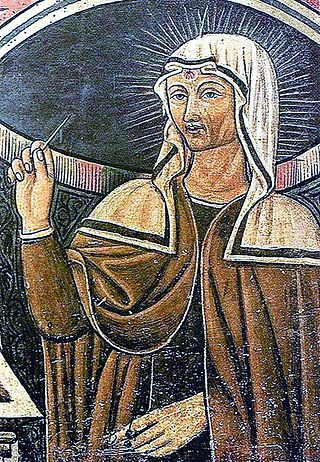
Rita of Cascia, born Margherita Ferri Lotti - Mancini, was an Italian widow and Augustinian nun venerated as a saint in the Roman Catholic Church.
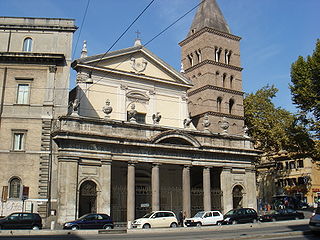
San Crisogono is a church in Rome dedicated to the martyr Saint Chrysogonus. It was one of the tituli, the first parish churches of Rome, and was probably built in the 4th century under Pope Sylvester I (314–335).

The Diocese of Orvieto-Todi is a Latin Church ecclesiastical territory or diocese of the Catholic Church in central Italy. It was created in 1986 when the historical Diocese of Orvieto was united to the Diocese of Todi. The Diocese of Orvieto-Todi is immediately exempt to the Holy See and not part of any ecclesiastical province.
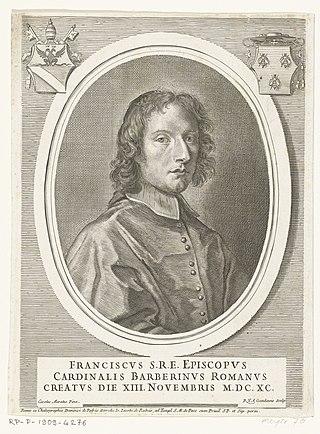
Francesco Barberini, iuniore was an Italian Cardinal of the family of Pope Urban VIII (1623–1644) and of the Princes of Palestrina.

Antonio Marcello Barberini, OFMCap was an Italian cardinal and the younger brother of Maffeo Barberini, later Pope Urban VIII. He is sometimes referred to as Antonio the Elder to distinguish him from his nephew Antonio Barberini.

Carlo Rossetti (Roscetti) (1614 – 23 November 1681) was an Italian Catholic Cardinal, born of the noble Rossetti family in Ferrara. Earlier in his career he went to London as a secret nuncio on behalf of Pope Urban VIII. While in London, he was addressed as Lord Charles Rossetti and was referred to as Prince Rossetti, using his title as Italian nobility for his cover, rather than as a representative of the Roman Catholic Church to avoid persecution.

Mario Theodoli was an Italian Catholic Cardinal.
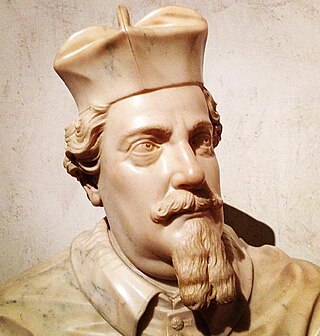
Giulio Gabrielli was an Italian Catholic cardinal. He is sometimes referred to as Giulio Gabrielli the Elder to distinguish him from Giulio Gabrielli the Younger.

Pope Urban VIII created seventy-four new cardinals in eight consistories.
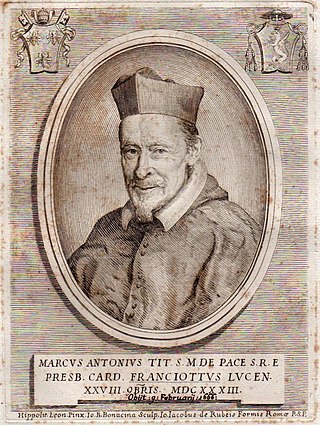
Marco Antonio Franciotti was an Italian Catholic Cardinal and Bishop of Lucca.
Lorenzo Raggi was an Italian Catholic Cardinal.
Antonio Tornielli was a Roman Catholic prelate who served as Bishop of Novara (1636–1650).
Alessandro Crescenzi, C.R.S. was a Roman Catholic cardinal who served as Camerlengo of the Sacred College of Cardinals (1685–1688), Archbishop of Recanati e Loreto (1676–1682), Titular Patriarch of Alexandria (1671–1676), Bishop of Bitonto (1652–1668), Bishop of Ortona a Mare e Campli (1644–1652), and Bishop of Termoli (1643–1644).
Aegidius Ursinus de Vivere or Aegidius Ursinus de Vivariis was a Roman Catholic prelate who served as Titular Patriarch of Jerusalem (1641–1647).
Bernardino Panicola or Bernardino Pannicola was a Roman Catholic prelate who served as Bishop of Ravello e Scala (1643–1666).
Bernardino Scala was a Roman Catholic prelate who served as Bishop of Montefeltro (1643–1667) and Bishop of Bisceglie (1637–1643).

Cosimo de Torres also Cosmo de Torres and Cosma de Torres (1584–1642) was a Roman Catholic cardinal who served as Cardinal-Priest of Santa Maria in Trastevere (1641–1642), Cardinal-Priest of San Pancrazio (1623–1641), Archbishop of Monreale (1634–1642), Bishop of Perugia (1624–1634), Apostolic Nuncio to Poland (1621–1622), and Titular Archbishop of Hadrianopolis in Haemimonto (1621–1622).
Benedetto Ubaldi (1588–1644), or Benedetto Monaldi, was a Roman Catholic cardinal.

Seaport with the Embarkation of Saint Ursula is an oil painting on canvas of 1641 by Claude Lorrain, signed and dated by the artist. The work was produced for Fausto Poli, who two years later was made a cardinal by Pope Urban VIII. It is now in the National Gallery in London, which acquired it in 1824 as part of the collection of John Julius Angerstein.













